A zillion beginner questions
2. Use a hoe to scrape them off at ground level.
3. If it does not rain, plan on using a sprinkler every 5-7 days, EXCEPT for veggies, which should not be allowed to go dry. Watch the lettuce, if it looks limp it needs water.
4. Roses should be pruned in spring (to 12-18" height) when Forsythia blooms. Deadhead zas needed during season.
5. You can prune dead stalks now.
6. Leave alone. Needs fertilizer (Rhododendron type) in early spring.
7. Most plants need fertilizer. You should have Rhododendron, Rose & general purpose types.
8. Weed first, at least with hoe.
9. Remove any tree (or bush) that is too close to house.
If so - and our schedules match up - I would be happy to pop by and point out the stuff I recognize.

@Tomcat did a great job addressing your issues. The most important thing to do,for any garden is HAVE FUN!
calliope said:
(you can yank onion grass,
DOn't yank onion grass as it will leave the bulb in the ground and just keep coming back...use a trowel or soil knife.
As Calliope above has said, take it slow, observe and if possible look at gardens around you. Also I believe Maplewood still has a Gardeners Club which you might like to look in to joining.
That you have a "zillion" questions is an excellent beginning!!
As far as watering goes, I disagree with tomcat a little. I never water my lawn, ever, and my yard is mostly full sun. In a hot, dry summer it will go dormant (brown) but will perk back up in the fall. It's a matter of personal preference and what you can tolerate looking at. I rather spend my water bill on newly planted shrubs and perennials (and long showers). Established shrubs, those that have been there for years, survive on what nature provides. I water the vegetable bed and roses only if it hasn't rained in a while or they are looking a little sad and then I stick my finger in the ground up to about the first knuckle to see if it is dry. I find it's better to water deeply and less often so the plants will send their roots down deep. Soaker hoses in your shrub or perennial beds will waste less water than a sprinkler.
As far as fertilizer goes, my plants, even the roses and clematis, do fine with manure/ compost, bone meal and fish emulsion in the spring and when planting. These organics, while sometimes smelly and more expensive, will attract earthworms and microorganisms, which improve your soil, which in turn improves your plants. Nonorganics do nothing for the soil or microbes.
For your rose, how much you prune depends on what type it is. Shrub roses can be pruned like any other shrub; hybrid teas should be cut as tomcat said. Ashdown roses has great video tutorials on rose care and pruning and determining what type you have on youtube.
When you mulch, make sure you do not mound it around the stems of your plants. Some wood chip mulches get fungus on them which can look like white vomit but is harmless, or another fungus that shoots spores on your house if it's around the foundation. (Our local termite guy suggested not putting wood chip mulch around the foundation because it can attract termites.) Next year, if you are ambitious in the fall, you can have free mulch by shredding all your leaves, and your neighbors', and storing them over the winter, in a pile out back, where they will break down a bit, or in bins in the garage, where they won't. Either makes good, weed-suppressing mulch to use in the spring.
Welcome to Maplewood/south Orange. Happy gardening!
We load up on gardening supplies every July 4th weekend (the sale is really the whole week)
at Metropolitan Plant Exchange in West Orange on Pleasant Valley Way,
where everything is 40% OFF. We buy Hollytone fertilizer for Roses, Azaleas, and flowers
to use the next year. Follow the directions. We also use Miracle Grow for tomatoes and
flowers we have in hanging baskets.
There's a Maplewood Garden tour each summer. It's advertised so look out for it.
It's fun to see other's gardens and get different ideas for your garden.
Happy Gardening!!!
So, I have a handful of tomato plants. One is short and has produced half a dozen or so small cherry tomatoes, and the others are tall and keep getting taller but so flowers or fruit have appeared yet. When do tomatoes generally appear, and what can I do to help them fruit? They are in the fullest sun I can provide, I gave them fertilizer (special fruit & veg stuff), I water them, but no fruits. I feel like Seymour.
Also, I have four Butter lettuce plants that have been growing very very tall. Is this normal? I'm not sure when to harvest them. They have lots of yummy looking leaves but huge center stalks. What is happening there?
Thanks! I'll try to post some pics but I'm sure they will be sideways.
No flowers and lots of lovely foliage says to me two things: 1) your plants may be getting too much nitrogen and 2) they may not be getting enough sun. Also, they may be a late variety, made later by our cold spring. I planted my tomatoes this year in a spot with slightly less sun (tree shadows) and I have significantly fewer flowers than last year, although the cherry tomatoes seem not to mind. I would stop fertilizing, or give them a shot of something without nitrogen (the N in the NPK number).
jed said:
So today I'm walking to the Jitney and admiring my neighbor's flowers -- it seems like he/she always have something new blooming there! -- and I see "OOH snapdragon! That's my favorite from when I was a kid!" I go over to take a closer look and I think "hmmm... those leaves and stalk look really familiar." And that's when I realize that I have been "weeding" snapdragons from my garden before they bloomed. SMH
I always thought that snapdragons were annuals, but I put in some that came back for years. I also had dusty miller that just wouldn't die. They got woody as hell, but they lasted for years. My advice to new gardeners is to let EVERYTHING grow, unless you definitively know it's a weed. Even now, I'll sometimes want to yank out a stalk, then say to myself, "Wait a minute; is that a ....?"
If it comes out easy, it's a plant.
If it takes Herculean effort, it's a weed.
I know that's not true for all plants, but it sure seems like it!
So my basil photo randomly showed up above the post... Here's the yellowing thing I was talking about.
Hi Y'all!
So, here I am, year two. Thank you so much for all your wonderful advice last year! I took a lot of it, ignored some of it (oops), and read books and blogs over the winter. Here's where we are now:
1) Started a bunch of seedlings indoors in March, I think? Transplanted them after Mother's Day. Morning Glories got accidentally weed whacked by a careless landscaper (it's been dealt with, don't worry) but luckily I planted some seeds right in the soil as a backup and those are doing AWESOME. Snap peas died shortly after transplant, but one is still hanging in there and has produced a tiny little pea. I'm trying to keep it alive but I think I'm failing. To maximize sun exposure (after studying sunlight patterns in the yard last summer & early spring) I decided to plant the rest of the seedlings (tomatoes & basil) in large containers on the patio. They are growing splendidly but the tomato's leaves look kind of lacy and the basil looks a little yellowish. Trying to attach pics but it's not working for some reason...
2) Thanks to your advice, my azaleas KILLED IT this year. Both bushes bloomed beautifully!
3) Last year's lettuce was disgusting. Didn't try that one again this year -- maybe next year.
4) Knockout Roses are a knockout -- again, thanks to your advice!
5) I put aside a big planter for my daughter to plant green beans and she dumped in an entire packet of seeds, plus a handful of tomato seeds for good measure. So that's a forest now and who knows what's what. Should I pop a trellis in there for the beans to climb? They don't seem to be the climbing type as they're not reaching for anything (like the Morning Glories are, and the Snap Peas were... RIP Snap Peas). Do I need to stake them?
6) Should I stake the tomatoes? Or only when they start to produce fruit?
7) I mulched! It looks SOOOO good, you guys. Makes a HUGE difference. And the weeds are much more under control.
8) OK OK this is so weird: Hydrangeas. Can we talk about Hydrangeas for a second? So... last year I waited to see what would happen on the old wood, and nothing ever popped out so I pruned it after all the new shoots grew up. It never bloomed. THIS year, I noticed early on that green shoots were popping out of the old wood! I left it alone and now it's all green and leafy... but no blooms yet. Isn't that crazy that last year NOTHING grew out of the old stalks and this year it ALL grew out of the old stalks? Anyway, when should it bloom?
9) I had a lone yellow tulip this year and I got so excited. I want to plant more bulbs! When should I do that? In the fall?
10) Last spring a co-worker gave me some potted white flowers. They were tall and white with small blooms, with a bulb root. I forgot about them and recently found them during an office cleanup. Are the bulbs still good? Can I re-hydrate them and plant them?
That's all (for now)... thanks again for your wisdom, and keep those pretty pictures coming!
Just quickly: You should stake the tomatoes now. Otherwise, shoving a stake in the ground after they've grown might damage roots.
eta: And congratulations on your new gardening skills. Sounds like you're going gangbusters!
Rentals
Sponsored Business
Promote your business here - Businesses get highlighted throughout the site and you can add a deal.









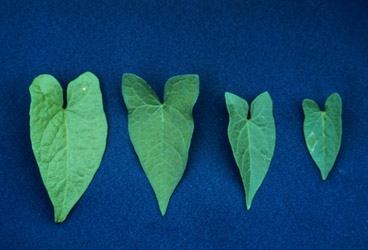





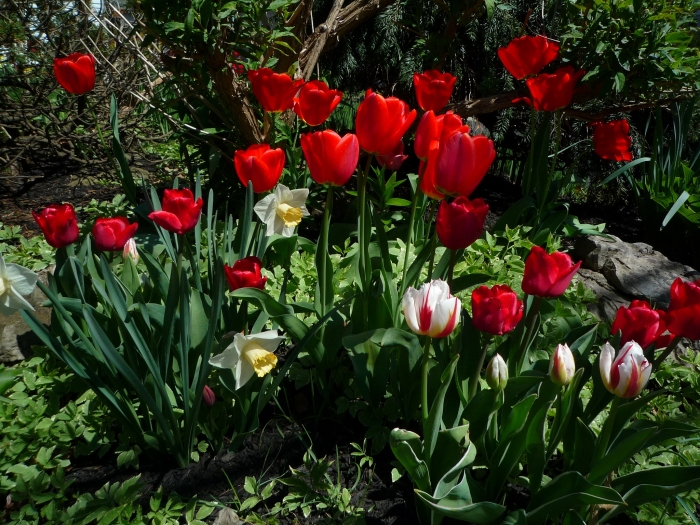
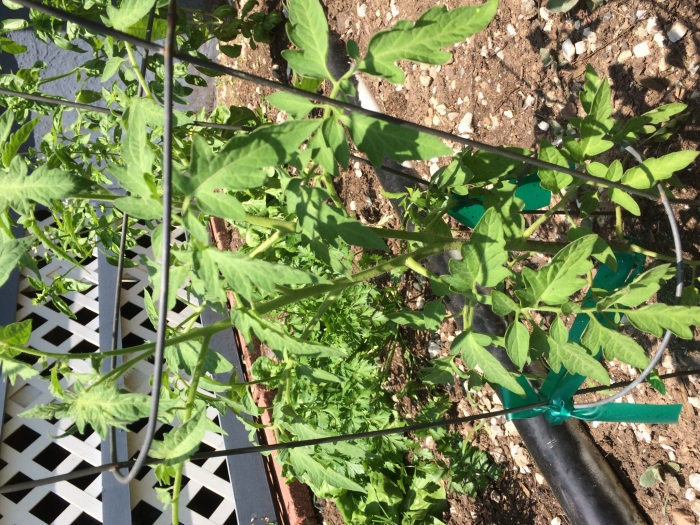





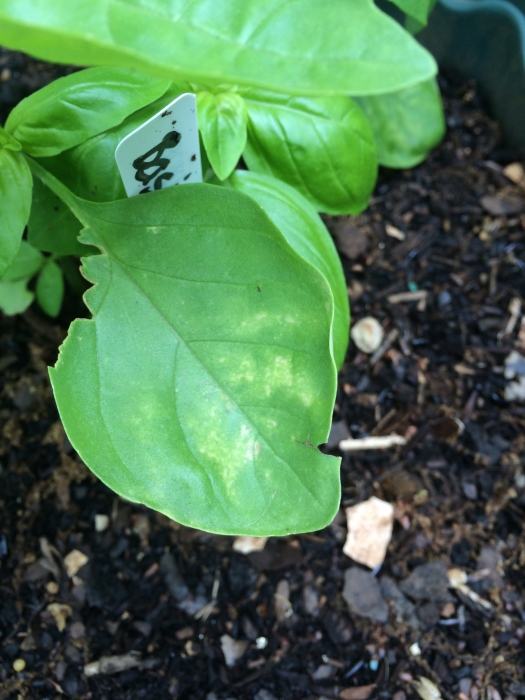
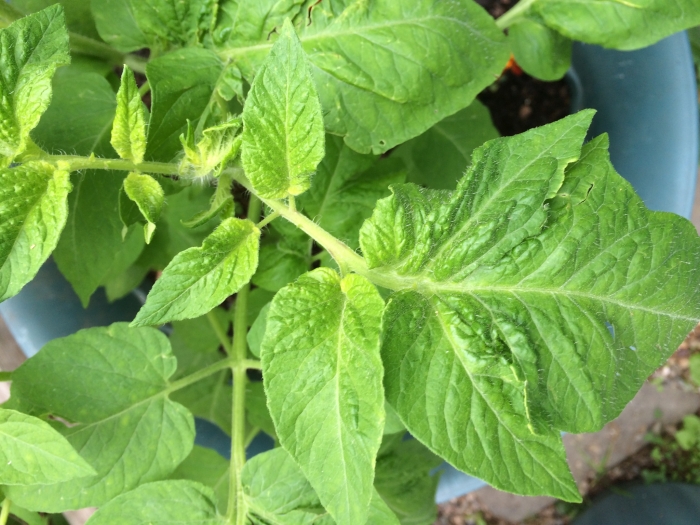






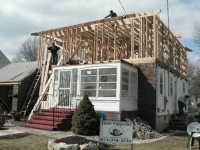

I do so love the photos of your gardens! We moved here in the late fall last year and are just experiencing gardening/landscaping for the first time! It's so fun to watch our garden and see what pops up. I am hoping someone can help me address some very elementary questions here so that I can keep up the beautiful garden I inherited!
1) How do you know what's a weed? I did a google search and found some helpful photos but there are some items I'm just not certain of.
2) what's the best way to get rid of those little teeny weeds that grow close to the ground? Pull em up by hand or spray something on them? And if the latter, how can I be sure I'm not killing the plants around them?
3) How often should I be watering my plants? I have forsythia, hostas, polka dots, glorious reds, tomatoes (maybe), herbs, lettuce, irises, roses, azaleas, and possibly a rhododendron, I'm not sure. And some various other things that are green, no idea what they are. Do all these things need to be watered regularly? How much water is too much?
4) What do I do with my rosebush? I deadheaded it in winter/early spring and it's blooming beautifully. Should I prune it at all? Or just let it be?
5) Hydrangeas... I've read so much about them and I'm still totally confused. To prune or not to prune the supposedly dead branches? Or wait until the new growth blooms and then cut away the old?
6) Azaleas. Half of them are not flowering and the other half are beautiful. Prune? Fertilize? Leave it alone?
7) And speaking of fertilizer, what needs fertilizer and what doesn't?
8) Mulch. I bought a bag of it and I'm not really sure what to do with it. Can I put it right on top of weeds and smother them or do I have to pull them first?
I think that's it... TIA for any and all guidance!